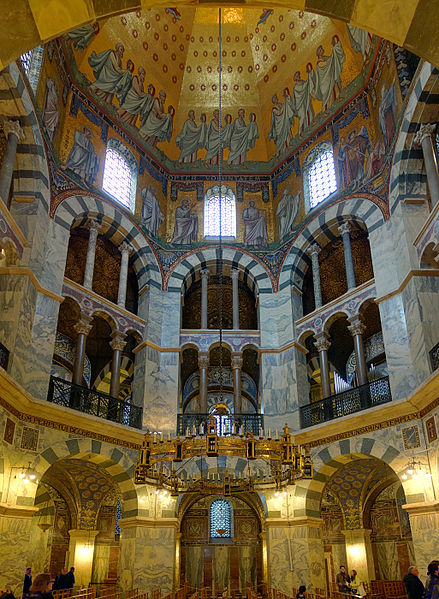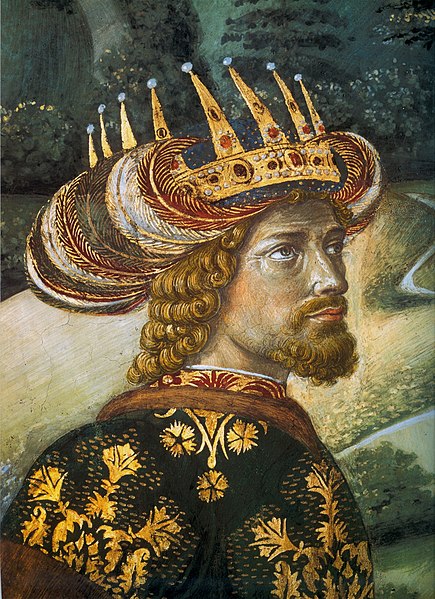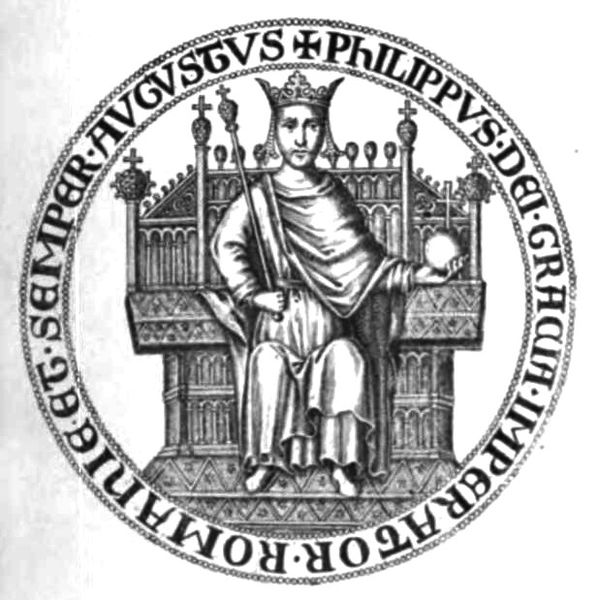Succession of the Roman Empire
The continuation, succession, and revival of the Roman Empire is a running theme of the history of Europe and the Mediterranean Basin. It reflects the lasting memories of power, prestige, and unity associated with the Roman Empire.
Carolingian emperor Louis the Pious represented as a Roman soldier holding a Christian cross, with superimposed poem De Laudibus Sanctae Crucis by Rabanus Maurus, 9th century
Basilica of San Vitale in Ravenna, designed under the Ostrogothic Kingdom in 526
Palatine Chapel, Aachen, designed under Charlemagne around 792
Presumed portrait of Emperor John VIII at the Council of Florence, by Benozzo Gozzoli, ca. 1459
The Latin Empire, also referred to as the Latin Empire of Constantinople, was a feudal Crusader state founded by the leaders of the Fourth Crusade on lands captured from the Byzantine Empire. The Latin Empire was intended to replace the Byzantine Empire as the Western-recognized Roman Empire in the east, with a Catholic emperor enthroned in place of the Eastern Orthodox Roman emperors. The main objective of the Latin Empire was planned by Venice, which promoted the creation of this state for their self-benefit.
Seal of Philip of Courtenay, Latin Emperor in exile 1273–1283. His title in the seal is Dei gratia imperator Romaniae et semper augustus ("By the Grace of God, Emperor of Romania, ever august").
Capture of Constantinople during the Fourth Crusade in 1204.






